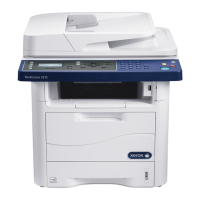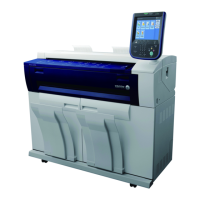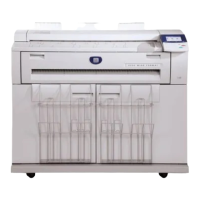Theory of Operation 2-9
3. The calibration strip holds this position until the Charge Coupled Device (CCD)
image reaches a specified luminescence value and is stable.
This time varies depending on the starting conditions of the lamp.
4. Once the color stabilizes, the strip retracts back to its home position.
Automatic Scanner Calibration
1. Lamps turn on.
2. The scanhead drives toward the automatic calibration target to ensure that the
head lock is released.
3. Scanhead moves back to the home position flag, out, and back in to confirm
operation.
4. Scanhead moves under the calibration target until the CCD achieves a
predetermined image quality and stability.
5. Scanhead moves toward platen glass to confirm motion control.
6. Scanhead moves back to the home position under the CVT window.
Manual Calibration
The manual calibration is a maintenance procedure accessed through the system’s
control panel. This calibration requires a calibration sheet provided with a new
scanner assembly. It is designed to ensure the document feeder and flatbead scan
heads are aligned to the system (motion control), the scan heads are aligned to one
another (duplex scanning alignment), and that certain white, black and gray scale
calibrations are performed. This calibration is performed:
■ At the factory during initial system setup.
■ Whenever the document feeder or scanner assembly, or both, are replaced.
■ If troubleshooting determines that the calibration has drifted or that the
calibration data has been erased from the system (ESD event).
Note
The manual calibration procedure is detailed in "Manual DADF to Scanner
Calibration" on page 6-9.

